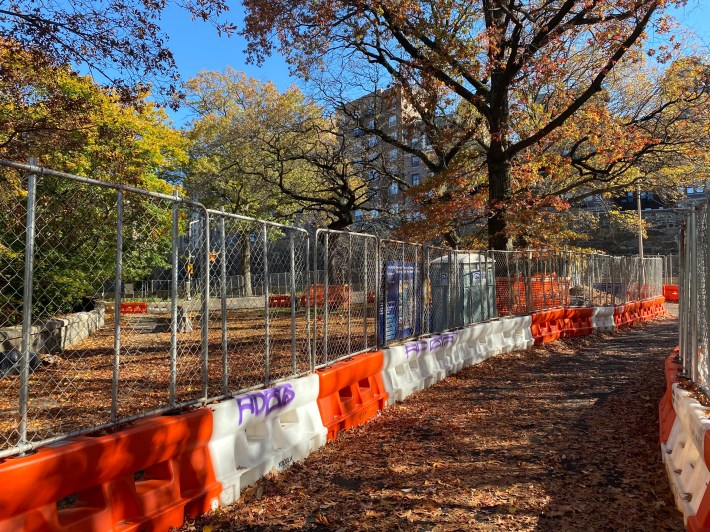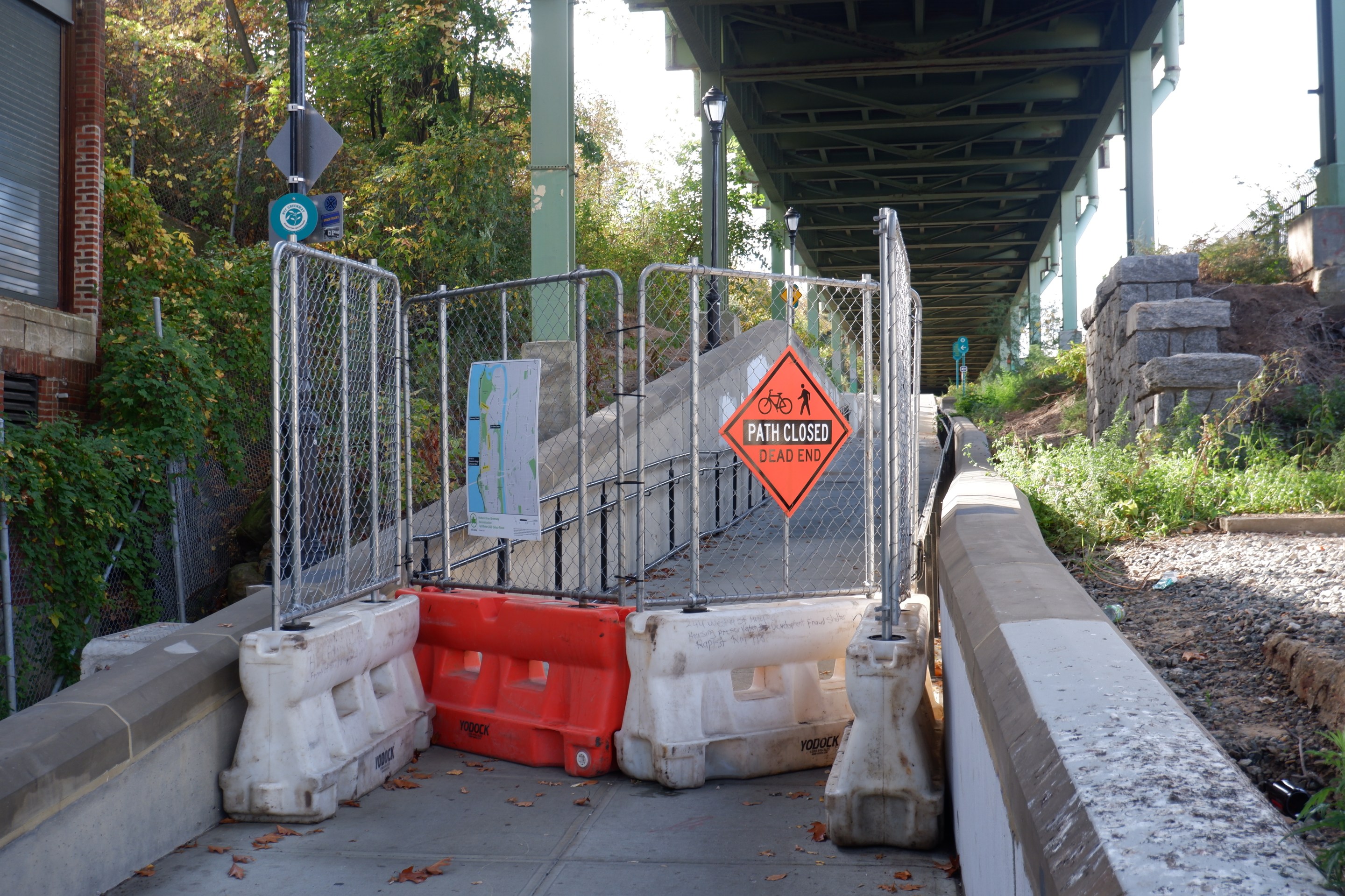The city's detour for the Hudson River Greenway uptown is a dangerous mess through hilly and dangerous Washington Heights streets with little to no bicycle infrastructure to speak of.
The Parks Department on Monday closed off 1.4 miles of the nation's busiest greenway between Dyckman and W. 181st streets to shore up the adjacent Henry Hudson Parkway's retaining wall and patch the bike and pedestrian path's sinkholes.
Locals had hoped the city would set up a protected bike lane by taking one the three car lanes on the adjacent Henry Hudson Parkway, but Parks officials shot it down, claiming it would cost $2 million and require an eight-month traffic study. For the next four months, cyclists will have to divert via Dyckman, Broadway, and W. 181st for about two miles using mostly unprotected lanes — a violation of city law requiring safe detours during construction.
The Department of Transportation has mounted "share the road" signs at 27 intersections to mark the alternative route.
There have been 102 crashes on the detour injuring 36 people so far this year, including six pedestrians, eight cyclists, and 22 people inside cars, according to Crash Mapper.
One cyclist already posted a the treacherous morning commute up Broadway, squeezing past double-parked cars and avoiding fast-traveling truckers.
On an unseasonably warm Monday, we tried out the city's route, starting on Dyckman Street at the northern tip of the detour.
There was a patchy pair of painted bike lanes on either side of the two-way street, which disappear intermittently and turn into shared lanes with "sharrows." The roadway is pretty quiet, since it dead-ends at the nearby riverfront south of Inwood Hill Park.
But even these meager markings become meaningless as drivers double park in them outside of some storage space buildings and auto body shops just blocks into the ride.
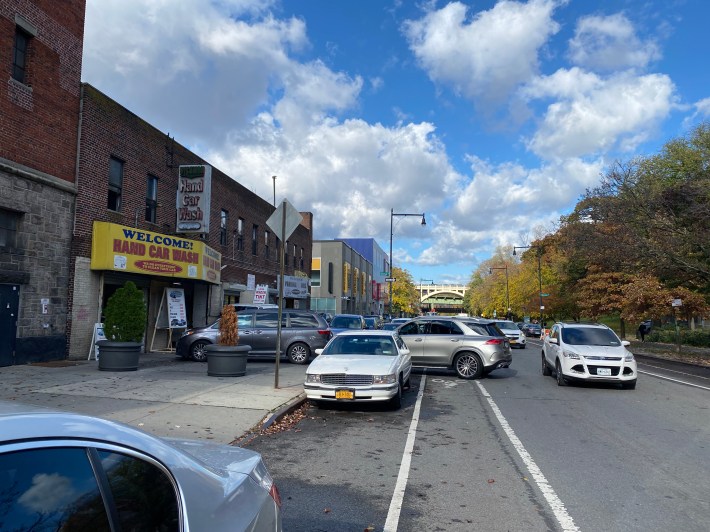
A brief relief comes at the car-free Dyckman Plaza, where there's a two-way protected bike lane runs for a block next to tables and chairs with people enjoying their morning coffee — a bittersweet reminder of how serene biking in New York City can be when there's proper separation from motor vehicles.
Crossing through a complicated intersection, we turn onto Broadway, which makes up the majority of the detour and has zero bike infrastructure.
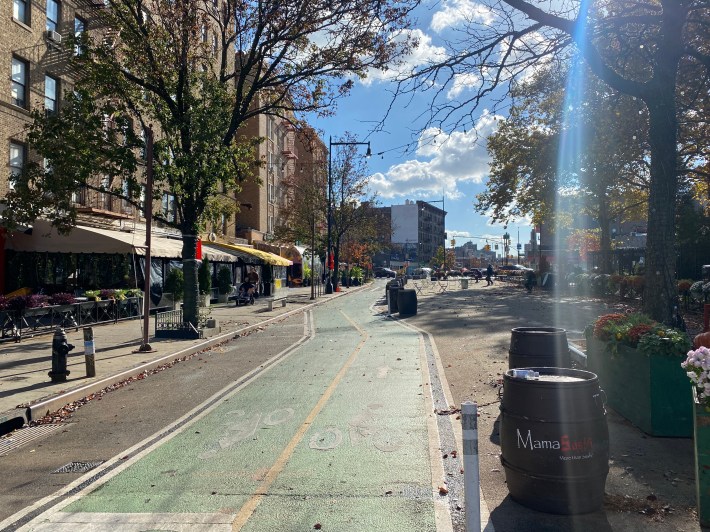
We ride alongside Fort Tryon Park on a windy section of Manhattan's most famous thoroughfare, which has two travel lanes and a parking lane in each direction and is on several MTA bus routes.
To start out, it's a fairly quiet stretch in the mid-morning, but there is a school at W. 196th Street, which probably has a lot of traffic earlier in the morning during drop-off and in the afternoon for pickup of students.
Broadway began to slope at Bennett Avenue, and buses and cars overtook me as I broke into a sweat pushing uphill for the remaining dozen or so blocks.
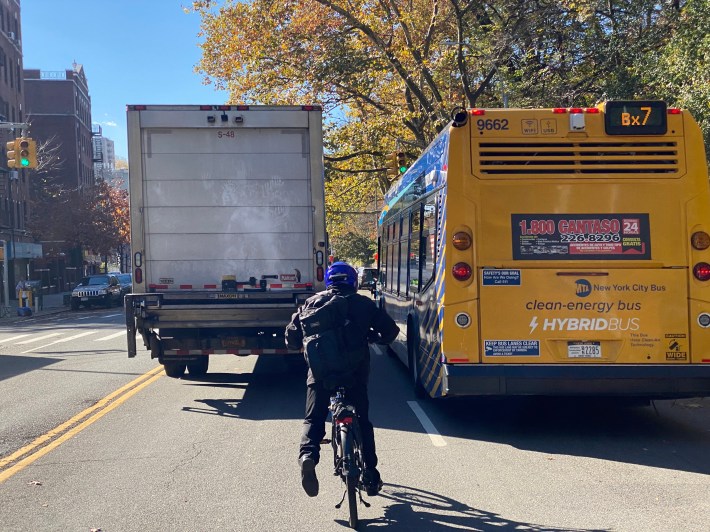
This part of the route is also the most crash-prone, according to city data, accounting for more than half of the collisions and nearly three-quarters of the injuries.
There are many illegally-parked and double-parked vehicles, blocking several of the bus stops along the way.
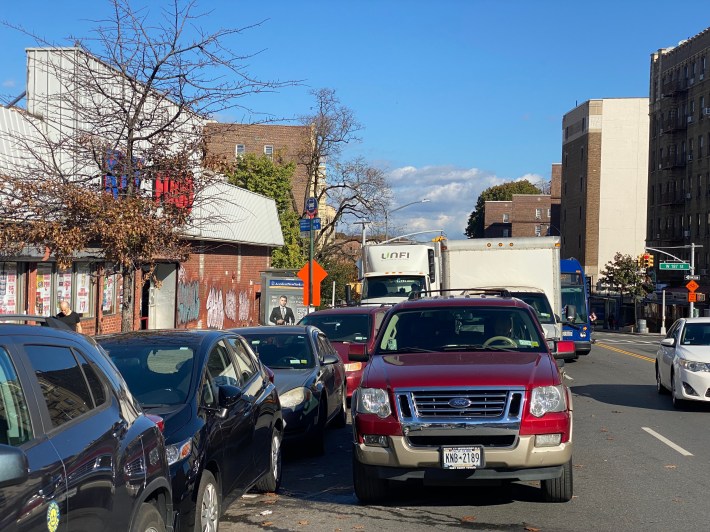
It gets super hairy outside the NYPD's 34th Precinct station house, where cars are combat-parked — including one vehicle without plates but a dashboard theft-vest, and another squad car blocking a cross-walk — which significantly tightens the space on the road.
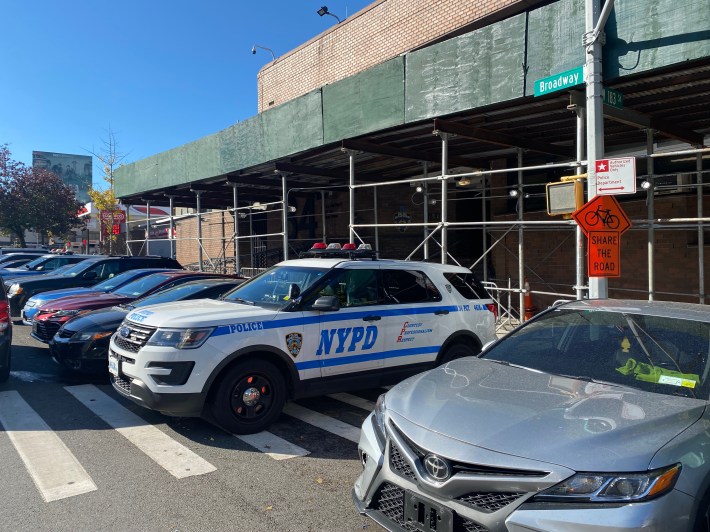
The uptown precinct earned the distinction of being a finalist in Streetsblog's 2021 March (Parking) Madness for the officers' myriad parking offenses, coming in second only to the 114th Precinct over in Astoria.
Area cyclist Allegra LeGrande told Streetsblog last week that there was "no way I would let my 11-year-old ride up and down Broadway," and it's easy to see why: It's a wide open and unregulated road, where drivers squeeze out cyclists or block pedestrian and public transit infrastructure.
Turning right at W. 181st, the slope continues up before dropping down steeply at Pinehurst Avenue.
This feels like New York City's version of Lombard Street in San Francisco, but in this case it's a two-way street where motorists aren't carefully and slowly driving down the windy like it's a tourist attraction.
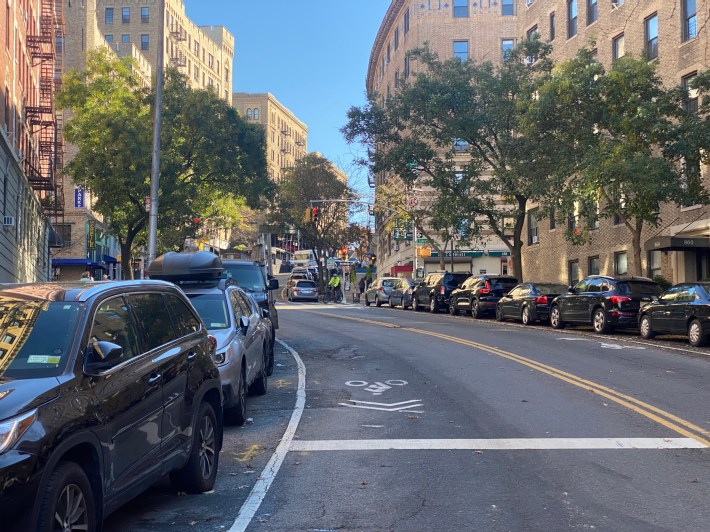
While uptowners have their fair share of hilly streets, this section of 181st feels ridiculous to have to bike up and down on a daily basis — or as local retiree Melanie Yolles put it to us last week: "That’s an impossible climb, unless you’re a real sportsperson."
At the bottom of the street, I crossed over the Henry Hudson Parkway via the shared pedestrian bridge to the southern end of the detour, squeezing past walkers, and finishing off back at the greenway.
The highway under the bridge is not heavily used and it would have not been a big lift to just move over the jersey barriers and take one of the three vehicle lanes for a temporary two-way protected bike lane.

Just down the hill, the city's contractor for the repairs fenced off a part of park to stage equipment, forcing people to bike and walk around it if they want to continue to the Little Red Lighthouse.
Apparently, if the city cuts off access to parkland there's no need to do an eight-month study.
